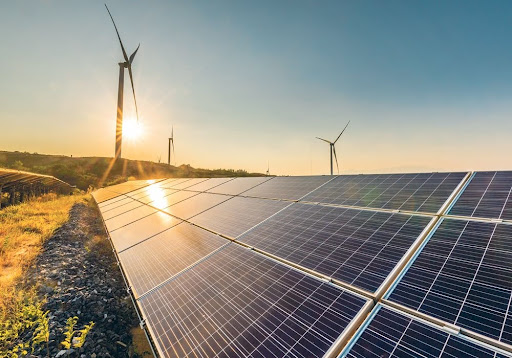Life cycle emissions data report for the off grid home solar system kit
In one analysis of more than 100 residential installations, researchers found that off grid home solar system kits emit only 20-30 grams of CO2e per kilowatt-hour over their entire life cycle, compared to 450 grams of CO2e/kWh for grid electricity in many areas. How do these kits achieve such a low carbon footprint? In this comprehensive report, we break down several key life cycle stages to demonstrate the low carbon footprint of off-grid solar kits, encompassing raw material sourcing, manufacturing, logistics, installation, operation, generation, maintenance, and battery replacement.
Off Grid Home Solar System Kit: Raw Material Sourcing and Embodied Emissions
The foundation of any off grid home solar system kit lies in its raw materials: silicon for the PV cells, aluminium for the frame, copper for the wiring, and steel for installation. Embodied emissions here account for approximately 30–35% of the total lifecycle CO2 equivalent (CO2e). High-purity polysilicon production consumes 100–200 kWh per kilogram and produces 4–6 kg of CO2e/kg. Furthermore, when aggregated over a 5 kW PV array and paired with 15 kilograms of aluminium and 20 kg of copper, the implied footprint reaches approximately 2,200 kilograms of CO2e. To mitigate this, many manufacturers are now sourcing recycled aluminium and prioritising polysilicon plants powered by hydroelectric energy, thereby reducing the silicon footprint to less than 2 kg of CO2e/kg. Through responsible material selection, the raw material phase sets a robust carbon benchmark for your off-grid solar system.
Manufacturing and Assembly Emissions
Converting raw materials into a fully integrated off grid home solar system kit, including PV panels, an inverter, a battery, and mounting hardware, adds 25-30% to the lifecycle emissions. The panel assembly, including wafer dicing, cell metallization, lamination, and frame attachment, generates approximately 300 g of CO2e/kWh, while battery module manufacturing (using lithium iron phosphate chemistry) adds approximately 80 kg of CO2e/kWh for each unit of storage capacity. For a 10 kWh battery pack, the total manufacturing emissions amount to approximately 800 kg CO2e. The production of the inverter and charge controller generates another 200 kg CO2e. An integrated assembly line that uses renewable electricity and lean manufacturing techniques can reduce these figures by up to 40%. By auditing suppliers’ energy sources and optimising factory operations, companies that produce off-grid home solar systems can ensure that manufacturing emissions are kept as low as possible.
Logistics, installation and site preparation emissions for off grid home solar system kit
Logistics and installation account for about 10% to 15% of the lifecycle carbon emissions of an off grid home solar system kit. Transporting the kits (usually from Asia to remote locations) generates 0.05 kg CO2e per kilogram of kit for every 1,000 kilometres travelled. A whole 5 kW system weighing 1,200 kg generates about 600 kg CO2e after 10,000 km of shipping and trucking. On-site installation (digging foundations, erecting brackets, laying cables) requires several days of diesel equipment, emitting about 300 kg CO2e. Emission reduction strategies include freight consolidation, collaboration with local assembly partners, and the use of electric or biodiesel machinery on-site. Additionally, training local installers can help reduce transportation emissions. With these measures, installation and logistics emissions for off-grid solar system deployments can be controlled to less than 500 kg CO2e.
Operational Generation and Maintenance Emissions Offset
The off grid solar systems for homes is expected to generate approximately 150 MWh of electricity over its 25-year lifespan, displacing an equivalent amount of grid electricity. At a lifecycle intensity of 20-30 gCO2e/kWh, total emissions are 3-4.5 tonnes of CO2e. Based on a 450 g grid mix, 67.5 tonnes of CO2e are offset. Net harmful emissions per off-grid home solar system exceed 60 tonnes of CO2e. In addition, ongoing maintenance cleaning of panels, replacement of inverters every 10 years, and occasional replacement of lubricants or filters add approximately 100 kg CO2e. Considering operation and maintenance, the off-grid home solar system kit effectively achieves a significant net carbon sink throughout its entire life cycle, from cradle to grave.
Battery Replacement and Secondary Impacts
Battery mid-life replacement (12th to 15th year) generates a secondary manufacturing carbon footprint of approximately 800 kg CO2e/10 kWh of lithium iron phosphate (LiFePO₄) battery pack. However, extending battery life by optimising the battery management system (BMS), partial cycling, and thermal management can postpone the replacement cycle to the 20th year, thereby reducing this impact. In addition, secondary use—utilising retired batteries for demand response or off-peak load shifting—can increase cumulative energy throughput without the need for new manufacturing. By quantifying battery life extension and secondary use, home off-grid solar systems can reduce emissions per kWh of energy storage to less than 50 g CO2e/kWh, thereby strengthening a robust decarbonization strategy.
Ultimately
These figures highlight that off-grid solar system kits provide more than ten times the carbon offset of their lifecycle emissions, making them a cornerstone of sustainable energy strategies in remote and rural areas.
ALSO READ: CodeSlide Tech News: Your Go-To Source for the Latest in Technology



